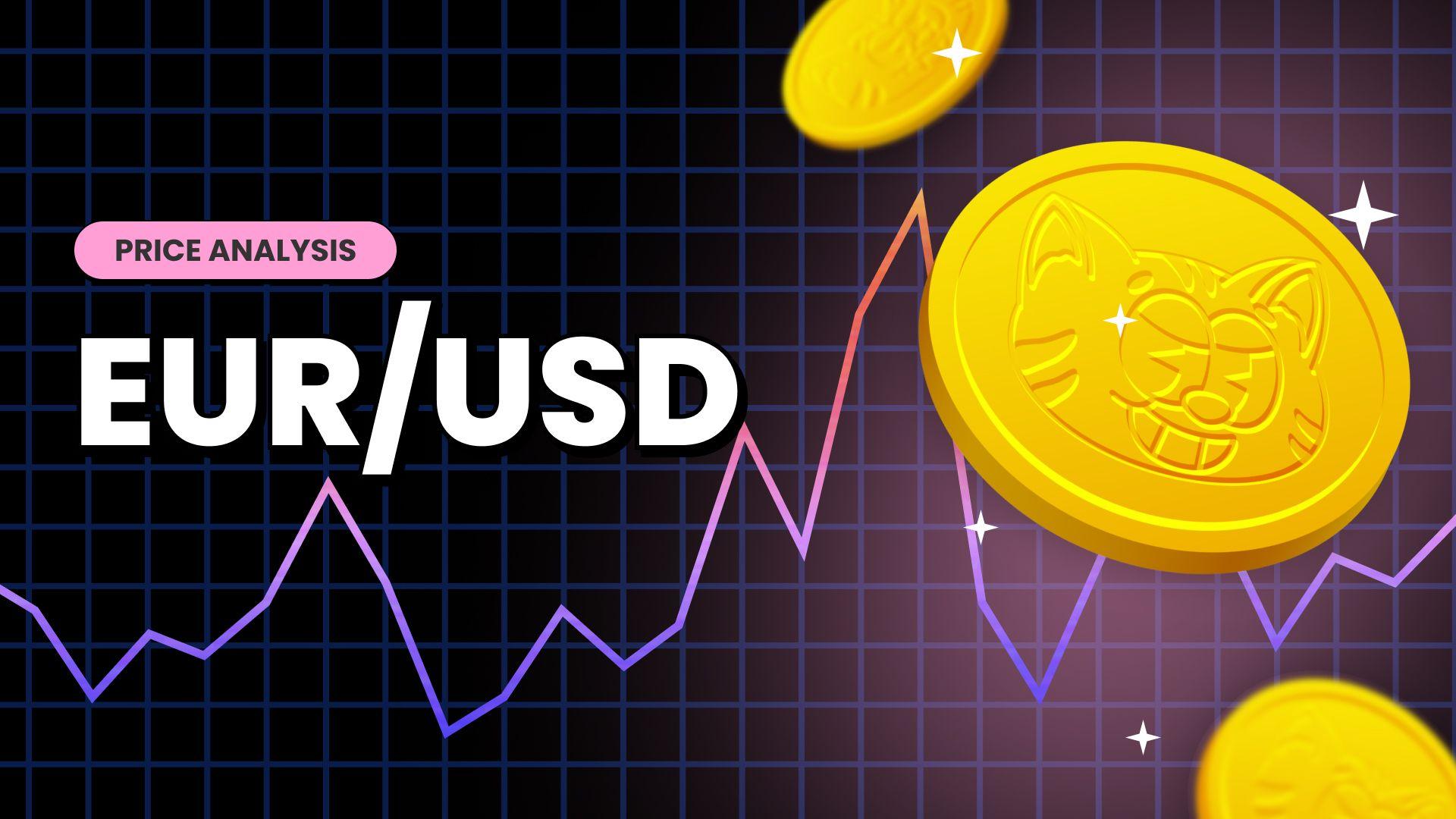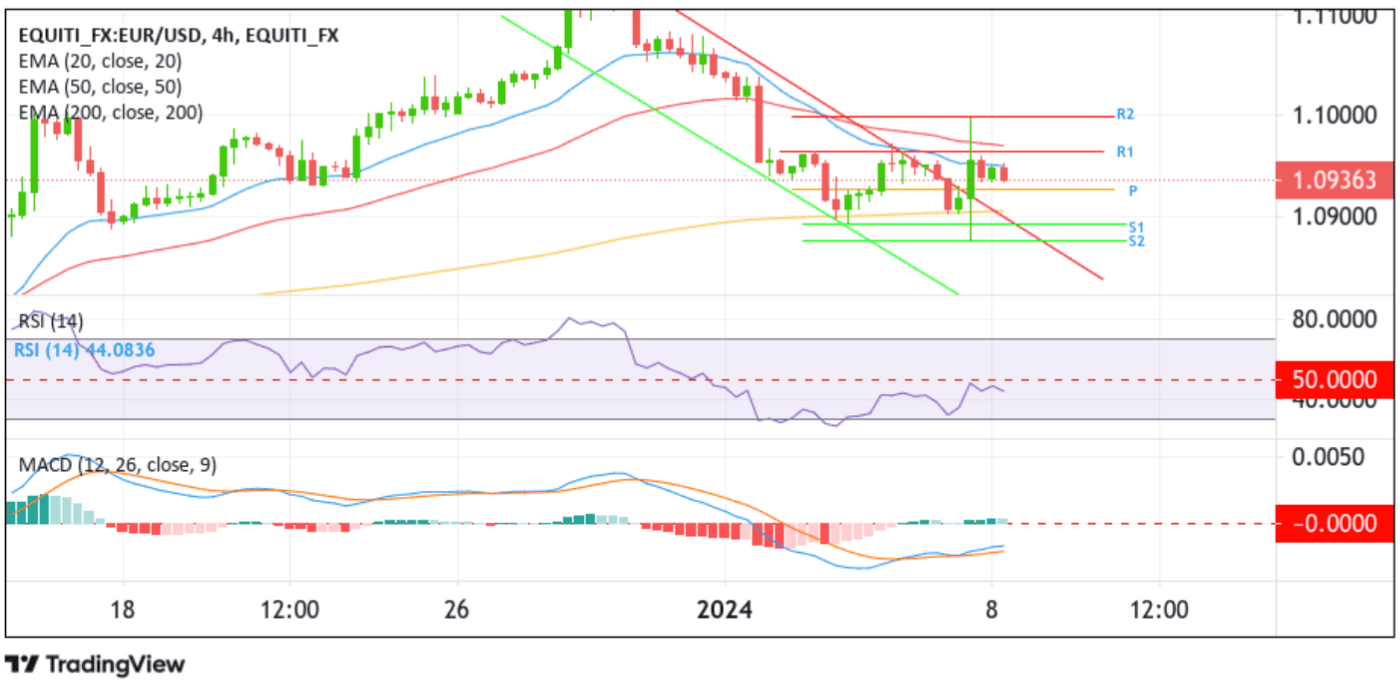EUR/USD Drops Back Below 1.09300 mark On Hawkish Fed Expectations; Further Downtick Seems Possible






Key Takeaways:
- The EUR/USD attracts fresh selling during the mid-Asian session and drops back below the 1.09300 mark
- Increasing doubts over early interest rate cuts by the Fed lend support to the buck and help cap the upside for the EUR/USD cross
- The hotter-than-expected U.S. jobs report suggests the case for a Fed rate hike soon
- Better than expected euro domestic consumer inflation figures support the case for a less hawkish central bank, which undermines the euro
The EUR/USD cross attracted some selling on Monday during the mid-Asian session and dropped below the 1.09300 mark, reversing a majority of its earlier gains weighed by the prevalent ton surrounding the buck.
A fresh leg up in U.S. Treasury bond yields amid increasing doubts that the Federal Reserve will cut interest rates as early as markets had perceived assisted the U.S. dollar in attracting some dip-buying on Monday during the mid-Asian session and turned out to be a key factor that underpinned the EUR/USD pair.
This comes after a U.S. Bureau of Labor Statistics report on Friday showed the U.S. economy added 216K jobs in December 2023, more than a downwardly revised 173K in November and well above market forecasts of 170K. Additionally, average hourly earnings for all employees on U.S. private nonfarm payrolls rose by 15 cents, or 0.4%, over a month to $34.27 in December 2023, the same rate as in the prior month and above market estimates of 0.3%. Over the past 12 months, average hourly earnings have increased by 4.1%, up from a 4% rise in the prior month and above market forecasts of 3.9%.

The hotter-than-expected jobs report comes on the heels of recent hawkish comments by top Fed officials, who raised concerns that the markets are pricing rate cuts ahead of themselves and that further rate hikes could be on the way. Richmond Federal Reserve President Thomas Barkin on Wednesday, while noting progress made on inflation as economic growth has stayed afloat, said that interest rate hikes remain "on the table" even though Fed officials at their most recent meeting in December indicated that this round of policy tightening is probably over.
Moreover, the minutes of the December meeting revealed that many officials seemed satisfied with the recent progress made on the inflation front and deemed cuts appropriate at some point in 2024. However, the minutes also suggested that the Fed intends to maintain a restrictive stance in the short term as uncertainties linger.
That said, CME's Fed Watch tool shows now that the probability of a 25 basis point rate cut in March has fallen to 60.9% from 73.4% last week, with the likelihood of a 25 basis point rate hike during the March meeting having risen modestly to 36.2% from 26.6% last week. With key inflation data coming this week, which is expected to show a jump in inflation pressures in the U.S., most expectations will be skewed towards a rate hike in March.

Shifting to the eurozone docket, softer euro domestic consumer inflation figures released last week support the case for a less hawkish central bank shortly, which acts as a headwind to the euro and helps the case for a further upside move for the EUR/USD pair. The core inflation rate in the Euro area, excluding volatile food and energy prices, cooled to 3.4% in December 2023, the lowest since March 2022 and in line with market expectations, a flash EUROSTAT estimate showed on Friday.
That said, the difference in monetary policy adoption between the European Central Bank (ECB) and the Federal Reserve (FED) is set to act as a headwind for the euro in the long run, suggesting the path of least resistance for the pair is to the upside. Further contributing to the sentiment around the EUR/USD cross is the generally weaker tone around the U.S. equity markets, which extends support to the safe-haven greenback and prompts follow-through buying around the shared currency.
As we advance, market participants now look forward to second-tier euro economic data, which, along with the broader market risk sentiment, will influence the euro and provide the directional impetus for the EUR/USD pair. The main focus, however, remains on Thursday's U.S. inflation data report.
Technical Outlook: Four-Hours EUR/USD Price Chart

From a technical standpoint, EUR/USD had been trading within a descending channel pattern for the past two weeks; however, a U.S. NFP-inspired spike on Friday caused the shared currency to break above the upper limit of the channel before price rebounded and consolidated within the 1.09574 - 1.09358 region. As per press time, EUR/USD is trading with a bearish bias, and a further increase in selling momentum will drag spot prices toward the pivot level (p)at 1.09267. A clean move below this level will pave the way for an accelerated decline toward the technically strong 200-day (yellow) EMA level at 1.09051. A convincing move below this level could negate any near-term bullish outlook and pave the way for aggressive technical selling around the shared currency. The EUR/USD could then drop towards the upper limit of the channel, about which, if sellers find acceptance below this level (bearish price breakout), the EUR/USD price could drop toward the 1.08919 support level (S1), followed by the 1.08757 support level (S2).
On the flip side, if buyers resurface and spark a bullish turnaround, initial resistance comes in at 1.09365 (R1). If the price pierces this barrier, EUR/USD could increase the 50-day (red) EMA level to 1.09687. On further strength, the focus shifts to 1.09994 level (R2).